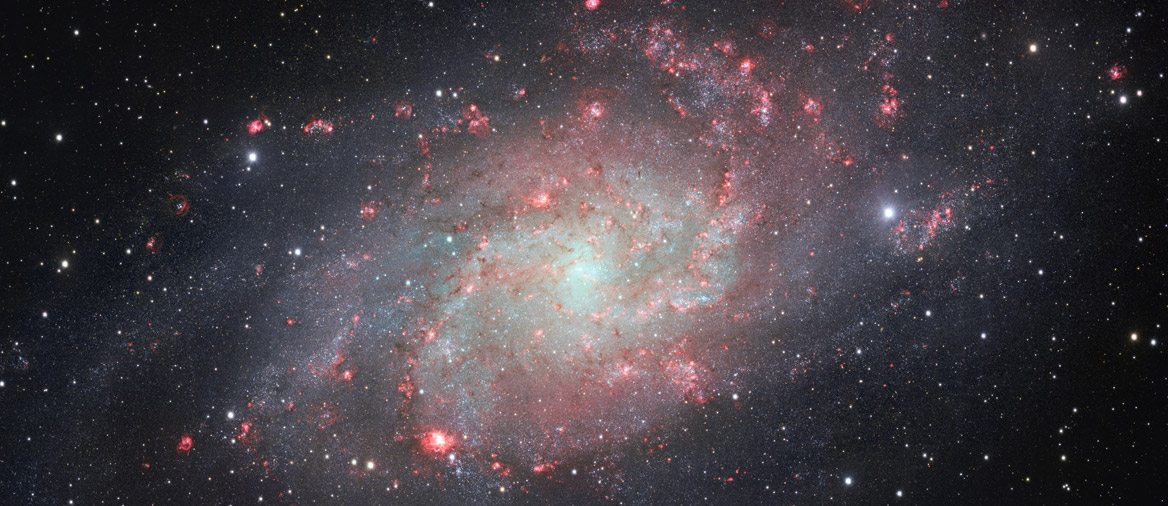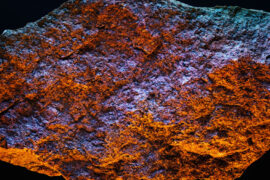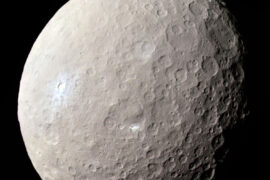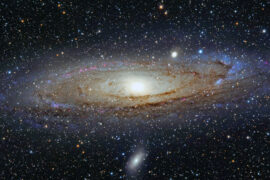The Triangulum Galaxy is one of the first targets that beginner stargazers try to look at. It is the farthest object that can be observed in the sky without the help of binoculars or a telescope.
Isn’t it cool that you can actually see a galaxy that is 3.2 million years away from us just with your eyes?
And while how visible it is depends on having clear skies and low light pollution, it is not hard to find with a simple pair of binoculars or a home telescope.
This is why so many people are curious about it. In this article, we’ll take a look at some quick facts and characteristics of the Triangulum galaxy to learn more about it. I don’t want to clickbait you but believe me, it is a pretty cool galaxy.
Fact sheet
| Nickname | Triangulum Galaxy | |
| Designation | Messier 33 (M33), NGC 0598, UGC 1117, PGC 5818 | |
| Type | Spiral galaxy | |
| Location | Triangulum constellation | |
| Distance from Earth | 3.2 million light-years (970 Kiloparsecs) | |
| Age | 10 – 13 billion years old | |
| Diameter | 61,120 light-years (18.74 Kiloparsecs) | |
| Apparent magnitude | 5.2 | |
| Radial velocity | 179 km/s | |
| Right ascension | 01h 33m 50.02s | |
| Declination | +30° 39′ 36.7″ | |
| Redshift | 0.000607 |
Triangulum Galaxy Facts
Quick Facts
- It is the farthest object that is visible to the naked eye from Earth.
- It is the third largest object of the Local Group, which is kind of like the nearby neighborhood of galaxies that includes our own, the Milky Way
- The Triangulum Galaxy is also the smallest spiral galaxy in the Local Group.
- It is sometimes mistakenly referred to as the Pinwheel Galaxy because of its similar spiral shape. The actual Pinwheel Galaxy has the designation Messier 101 (Triangulum is Messier 33).
- It is not shaped as a triangle as its name might suggest. It is a spiral galaxy.
- It is suspected that the Triangulum Galaxy is sort of a “satellite” to the Andromeda Galaxy.
- Charles Messier was the first person to catalog it in August 1764, but it was discovered since ancient times as it is visible to the unaided eye.
- Unlike most galaxies, Triangulumn does not have a supermassive black hole at its center. Instead, it probably has a medium size black hole.
- The black hole at the center of the Triangulum galaxy is between 100 and 10,000 times the size of the Sun.
- It can be seen in the direction of the Triangulum constellation.
- It is about 40% smaller than the Milky Way.
- It is possible it will collide with both the Andromeda Galaxy and the Milky Way in the distant future.
Discovery
It is not possible to tell who was the first person who discovered the Triangulum Galaxy because it is visible to the naked eye. This means that even ancient civilizations could have observed it although they probably considered it to be a star.
The first person to refer to it as nebulae or galaxy was probably the Italian astronomer Giovanni Battista Hodierna around 1654.
Finally, Charles Messier was the first person to catalog it on August 25, 1764, for the Messier catalog where the designation Messier 33 or M33 comes from.
Naming
There is no standard naming convention for galaxies that receive proper names. Some are based on appearance, some on a distinct feature, and others, like the Triangulum Galaxy, are simply named after the constellation that is in the location of the sky where they are.
The Triangulum constellation is a small three-star constellation in the northern hemisphere that as its name implies, is shaped like a triangle.
This does not mean that the Triangulum Galaxy has any relation to the stars of the Triangulum constellation, they are all millions of light-years apart from each other, it simply means that from our perspective on Earth, they are in the same general direction in the sky.
The designations Messier 33, NGC 0598, UGC 1117, and PGC 5818 are other names for the Triangulum Galaxy. Each of them is a different designation for one of the multiple catalogs of astronomical objects.
Physical characteristics
The main characteristic of the Triangulum Galaxy is that it is a spiral-shaped galaxy. This means that it has various visible “arms” made out of gas coming out of its nucleus that are shaped like a spiral.
The Triangulum Galaxy has a diameter of 61,120 light-years which is about 60% that of the Milky Way. However, Triangulum is considerably less dense than our galaxy. It is estimated that it contains about 40 billion stars, which is only 10% of the 400 billion that the Milky Way is believed to have.
The nucleus of the Triangulum Galaxy appears to be a mid-sized black hole, which is quite small compared to the supermassive black holes that are at the center of other galaxies and that are 100 to 1,000,000 times larger.
How to find the Triangulum Galaxy
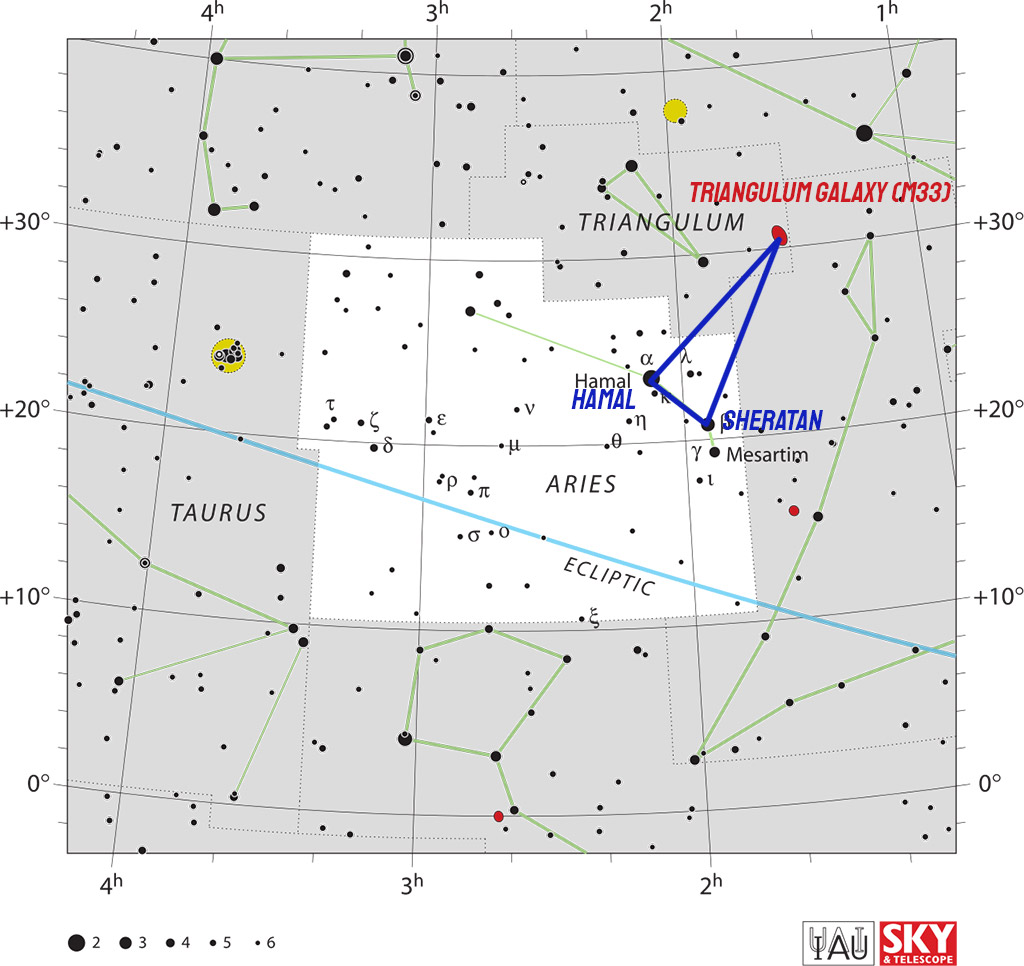
The Triangulum Galaxy is right beside the Triangulum constellation. Triangulum doesn’t have any prominent stars so the easiest way to locate it is to find the constellations of Aries.
Here’s a guide on how to find Aries.
Once you have located Aries, the Triangulum constellation will be located right on top of it. You can also find the two brightest stars in Aries, Hamal and Sheratan. The Triangulum Galaxy forms a triangle with these two.
If you are using a star map or a location app, the Sombrero galaxy is located at a right ascension of 01h 33m 50.02s and declination of +30° 39′ 36.7″.
Photos of the Triangulum Galaxy
The following image is composed of 54 different photos of the Triangulum galaxy taken by the Hubble telescope. It shows in great detail its nucleus and the interior of its arms.
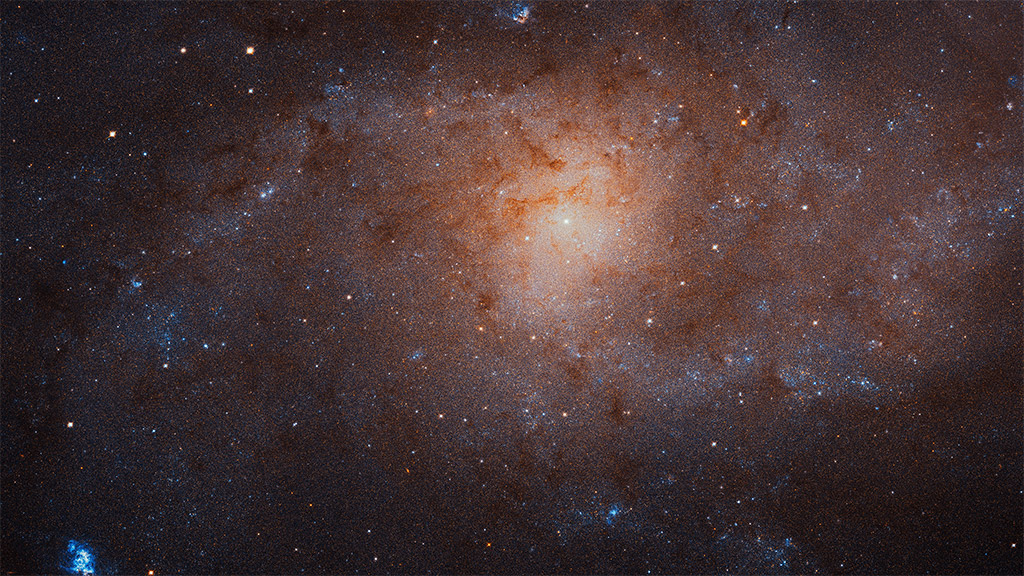
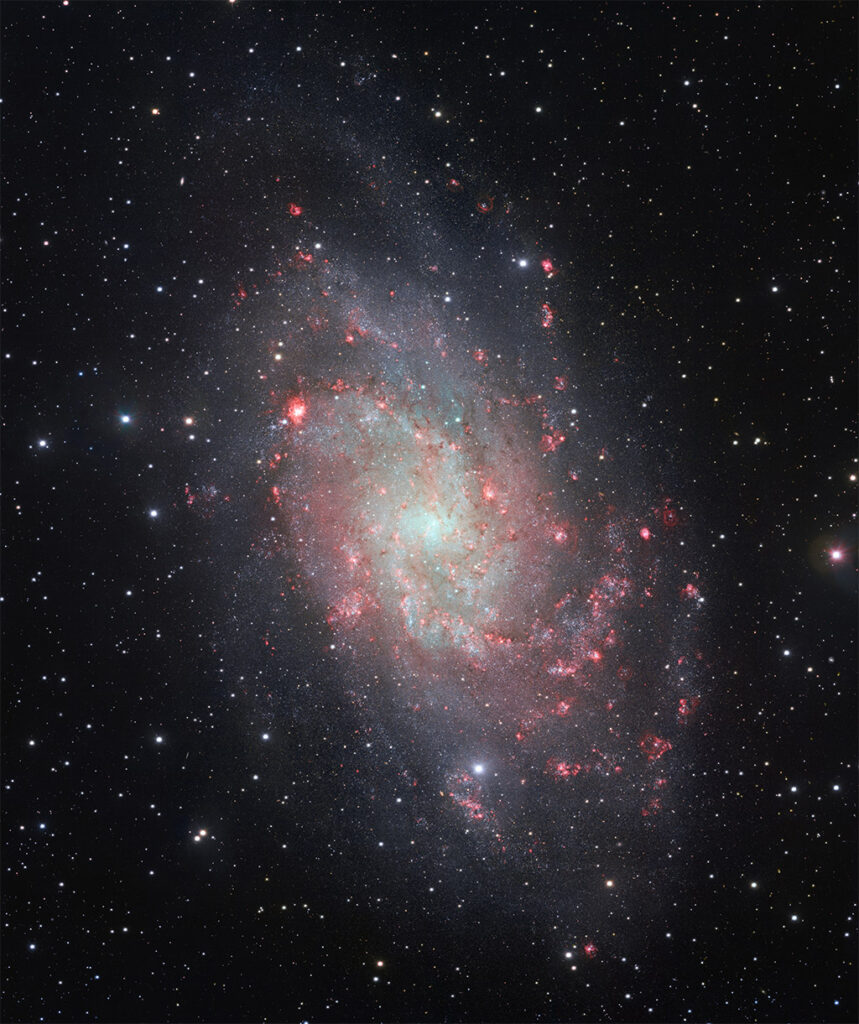
The following photos are taken using amateur and hobbyst-grade telescopes. This is closer to what you can expect to see if you point a telescope at the Triangulum Galaxy.
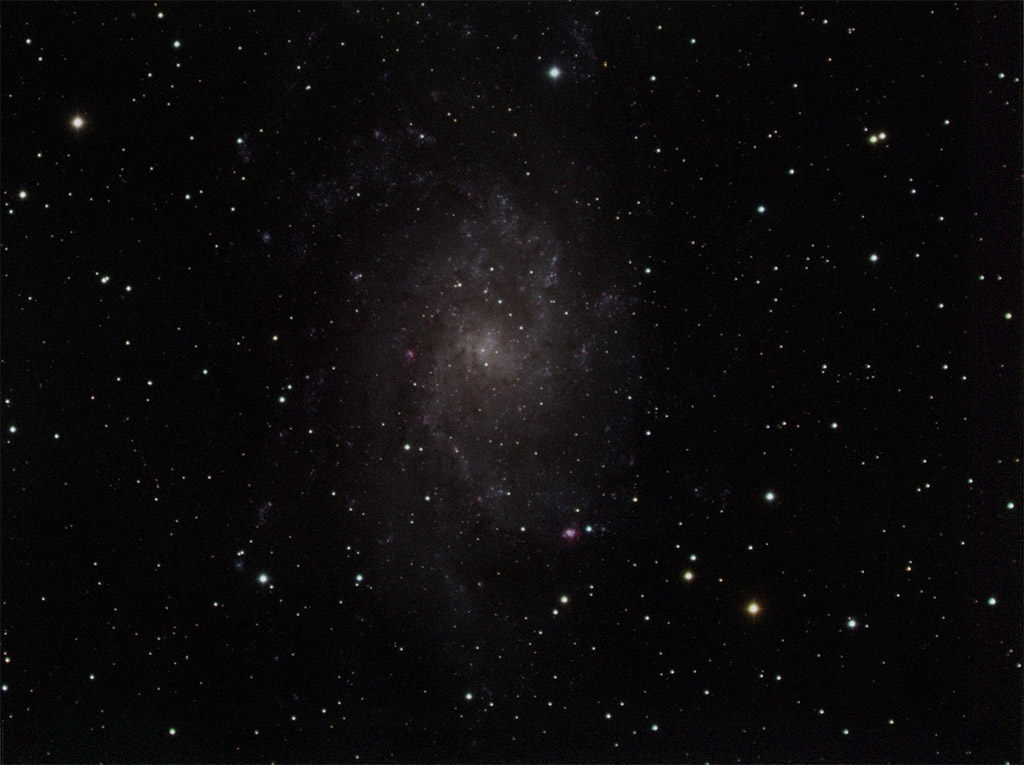

Summary
- The Triangulum Galaxy can be observed with just your eyes under excellent sky conditions
- It is gravitationally bound to the Andromeda Galaxy, which means it is very relevant to us because the Milky Way is on track to collide with it in several billion years.
- It can be found right by the constellation of Triangulum, near Aries and Pisces.

